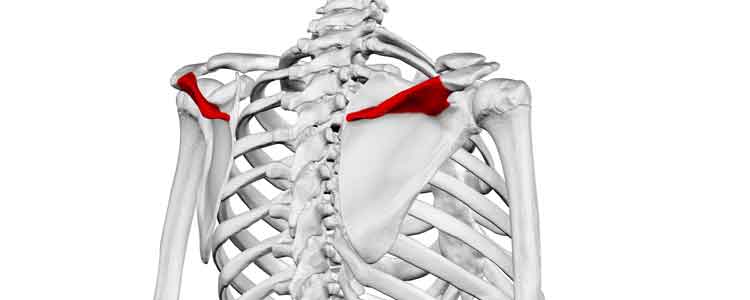
There are over fifty-seven million Americans at risk for osteoporosis. Girls make up an astounding 80 percent of individuals that are influenced by osteoporosis. The disorder hits the old and the young alike though osteoporosis is associated by most people with the elderly. However, osteoporosis does become considerably more widespread as you age — affecting one in two females that are over the age 50. In a second we’ll discuss eleven of the available natural remedies for osteoporosis.
Briefly, though, let’s talk about our bones. As our bodies grow our bones get longer and stronger. About 80 percent of the bone mass is that rough, hard, outer bone called cortical bone. The remainder of the bone makeup is the substance called trabecular bone. Your bone mass starts to decrease once you hit 30. The trabecular bone is commonly the one that initially starts to lose critical density, and the cortical bone mass also decreases, but at a slower speed, when you get old.
Until some benign bump to the garage door turns into a break, unless you are conscious of the risk factors and take action, you might not realize you have the condition.
Considerations
The National Osteoporosis Foundation’s site lists a quantity of prescription drugs which have been proven to be powerful in treating osteoporosis. Most of the medications have possible side effects, including joint and muscle pain, irregular heart rhythm, uncommon bone fractures, esophageal tumors, and osteonecrosis of the jaw. Osteonecrosis is the death of a section of bone brought on by an impaired blood supply to that section.
There is a variety of natural remedies to treat and prevent osteoporosis. Before attempting any sort of alternative treatments or abandoning prescription drugs, however, you should talk about any changes in potential treatments with your physician.
1) Calcium Supplements
The National Osteoporosis Foundation suggests the usage of calcium supplements for these people that are not able to eat their daily necessity of calcium through food. The NOF warns that the body can absorb just 500 milligrams of calcium at a time, so it’s best to distribute the usage of any supplements through the day instead of taking them all in one go. The Office of Dietary Supplements says that both calcium citrate and calcium carbonate are equally powerful kinds of calcium. Of the 2 of them, however, for individuals with low amounts of acid in their stomach, calcium citrate is more easily consumed.
2) Alfalfa
The alfalfa plant has extremely long roots that grow deep in the soil so as to allow minerals to be absorbed from deep within the earth. These vitamins, minerals and phytochemicals are powerful compounds for treating osteoporosis. Specifically, alfalfa comprises calcium, phosphorous, magnesium and vitamin D.
3) Horsetail
Comprising a great amount of silicon, the bones are protected by horsetail from loss of density and strength during times of transition and hormonal deficiency. Horsetail was even used by the ancient Greeks in tea!
4) Red Clover
Results from a study published back in the May 2009 issue of “Clinical Interventions and Aging” demonstrate that red clover can help with endocrine-associated osteoporosis. However, the research was carried out in rats, not in individuals with the illness. MedlinePlus makes note that even though this herb is occasionally used in the prevention of osteoporosis, the evidence to support this is inadequate. Red clover is probably safe, but side effects may include muscle pains, rash, nausea and vaginal bleeding. For those who have an illness or even a bleeding disorder, don’t use red clover. It might interact with other medications or birth control that you might be taking, so always consult your primary health care provider before taking it.
5) Parsley
Often viewed as nothing other than something to decorate your plate, parsley can really boost the strength of one’s bones, and helps to fight arthritis with its enormous reserves of boron and fluoride.
6) Dandelion
The leaves of a dandelion are a rich supply of magnesium and calcium, plus other vitamins and minerals. The leaves may be used in other culinary dishes and salads, or prepared as a tea. Since the active compounds are quite soluble in alcohol the tincture may be much more powerful than when the herb is taken in other forms.
7) Dong Quai
As is apparent by its name, Dong Quai is indigenous to Eastern Asian countries (Korea, China, and Japan). Recent reports have questioned its legitimacy and effectiveness, although it is believed to have a stabilizing and equilibrium effect on your body’s amounts of estrogen.
8) Wild Yams
Wild yam plants have been used for centuries all over the world by girls to relieve their menstrual cramps, and to help osteoporosis in menopausal women. However, there is currently not real, hard scientific evidence to support or demonstrate its claim of containing estrogen (phytoestrogen).
9) Black Cohosh
Some of the more typical uses for black cohosh include relieving symptoms of menopause, for example, depression, stress, hot flashes, and painful periods. Some of the side effects of this herb may comprise things like headaches and an upset stomach. Black cohosh can be found as a dried root, infusion, or tincture.
10) Exercise
Exercise is an all natural, healthy measure you can add to your life to help slow osteoporosis, and it, of course, has various other advantages. Weight-bearing exercise builds and preserves bone mass. Instances of weight-bearing exercises are: dancing, jogging, weightlifting, step aerobics, hiking and racquet sports. According to the Mayo Clinic, as well as increasing bone density, exercise will also help to strengthen muscles and enhance balance, which might prevent falls.
11) Nutrition
The Mayo Clinic advocates 1,000 mg daily of calcium for individuals 50 and under, and 1,200 mg daily for those over age 50. High-calcium foods include cheese, low-fat milk, spinach, collard greens, tofu, salmon, sardines, yogurt, and ice cream. Vitamin D plays a critical part in the way the body absorbs calcium.
